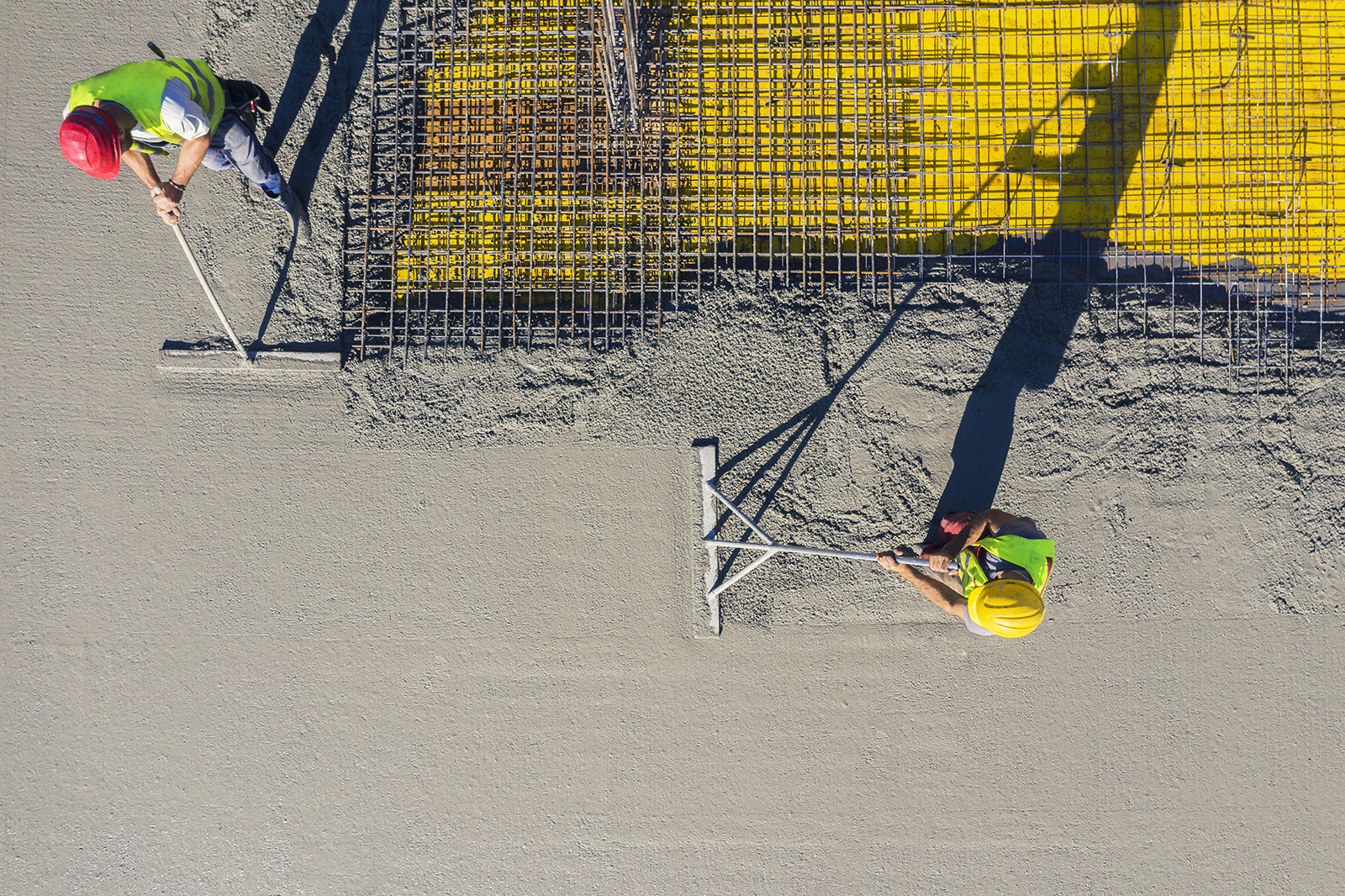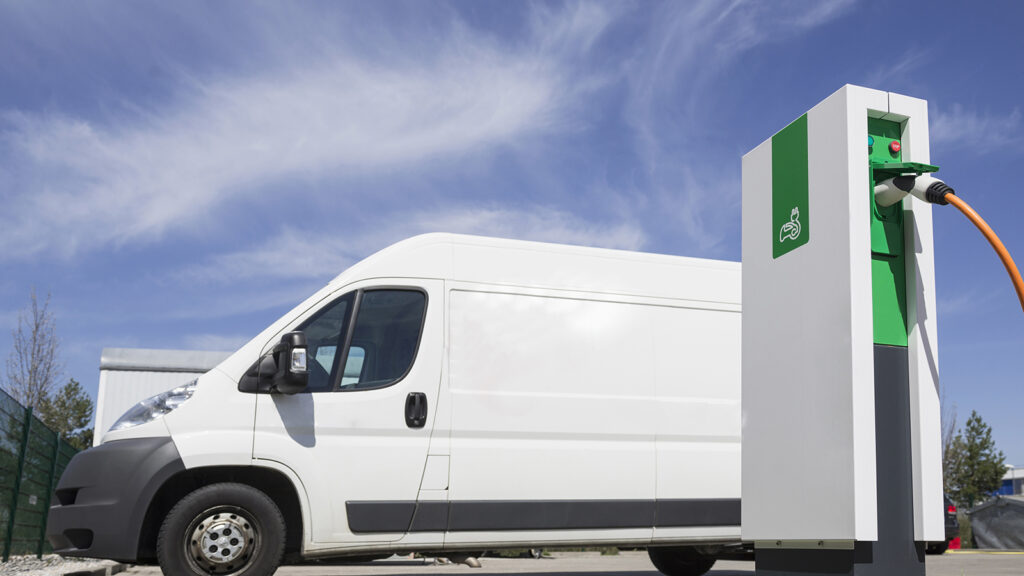
Photo: Getty Images
Before long, 50% of the carbon in the world’s buildings will come from embodied concrete. So finding a way to greatly reduce the carbon intensity of concrete-making is essential.
The construction industry has set itself a goal of eliminating all carbon in concrete by 2050. But according to a new report from the Rocky Mountain Institute, there are ways that the sector can act immediately. BRINK spoke to the authors of the report, Radhika Lalit and Ben Skinner
LALIT: Ninety percent of total emissions in the cement and concrete sector comes from the production of clinker, even as you look at the total emissions across the value chain starting with the raw materials through to the end of the life of a building or an infrastructure project.
The clinker production process is essentially the heating of limestone and clay at very, very high temperatures, around 1400 to 1500 Celsius, in a rotary kiln. This is then ground and mixed with gypsum to form cement. Concrete is produced by mixing that powdered cement with water, aggregates, sand, gravel, etc. So the phase where most of the emissions occur is actually the clinker-making itself.
SKINNER: And in that clinker production, it’s roughly split 60% between what we call process emissions — emissions coming from the chemical reaction — and 40% of emissions from actually heating the kiln to such high temperatures. So even if the cement industry were to use clean fuels, it will still be left with a large share of emissions coming from the chemical reaction.
A Building’s Embodied Carbon Is Fixed at Construction
BRINK: So when we talk about the carbon footprint of buildings, you are referring to the manufacturing process?
LALIT: There are two kinds of emissions in a building: the embodied carbon emissions and the operational emissions of a building. Unlike the operational emissions, which can be reduced by using more efficient appliances, etc., embodied carbon really is fixed at the time of construction. You can’t reduce it thereafter — it is kind of memorialized inside that building.
Steel and cement/concrete are the emissions that never go away, even if the building becomes more efficient. In fact, embodied carbon will account for around 50% of the built environment emissions globally by 2035, even as operational emissions of the buildings reduce. This is a major source of emissions that we need to work around, and the only way to do it is by having concrete which is less emissions-intensive.
Low-Carbon Cements and Concretes
BRINK: Is there any sort of substitute on the horizon that could be used instead of concrete? Or a low-carbon form of concrete?
LALIT: Yes, there are several pathways to reducing emissions from the cement and concrete sector. The innovations are spread across the 3Cs (clinker, cement, concrete) of the value chain of production.
Cement manufacturers can immediately start by reducing the carbon in their clinker-making process. The primary raw material for clinker is actually limestone. You could use other materials such as calcium silicate, magnesium silicate, steel slag, recycled clinker, mining tailings, crushed concrete waste as well.
Around the laying of the concrete, you can use less concrete in the first place, through machine learning and design software. There are also mineralization startups that store the CO2 in concrete aggregates. Supplementary Cementitious Materials such as fly ash, slag, volcanic ash, and calcined clays have little or no associated emissions and can be introduced into the cement blend to replace a portion of clinker.
Historically the construction industry hasn’t been incentivized to consider embodied carbon when creating our built environment. The focus has been on reducing costs, not carbon.
The LC3 (Limestone Calcined Clay Cement), which consists of 30% calcined clays, 15% limestone, 5% gypsum and 50% clinker, and other innovative cement blends can immediately help reduce carbon emissions by up to 40% in a cost effective manner without causing major changes to the traditional cement plant.
These innovations are at a different technology readiness levels. Some of them are in concept states, some of them are in large prototype demonstration stages, but the key to solving the decarbonization challenge for the industry is seeing some of these innovations achieve commercial success at industrial scale within the next three to five years so that their costs can go down.
The Need for Ambition and Scale
There is a need for having a more comprehensive systems approach to lowering the emissions in this sector. It’s got to be a combination of everything: switching to more efficient design in construction, more efficiency in cement and concrete production, the use of alternative fuels, and the use of less clinker.
BRINK: Where is the construction industry in this — is it pioneering these sorts of changes?
SKINNER: Historically the construction industry hasn’t been incentivized to consider embodied carbon when creating our built environment. The focus has been on reducing costs, not carbon. Companies are hesitant to take on anything perceived as additional risk. With that being said, we are starting to see some great developments all across the value chain, and it’s an exciting time in the construction space.
LALIT: What gives us hope is the fact that there is a big rise in ambition across the industry, where companies, corporations, real estate players, anybody who’s constructing new buildings, new ports, new highways, new roads, is looking into these materials.
A new coalition of over 65+ corporate buyers, known as the First Movers Coalition, has been created by the U.S. State Department and the World Economic Forum to create market signals for sectors like the cement and concrete sector by leveraging the purchasing power of the customers of the industry. Country-led initiatives, like the Industrial Deep Decarbonization Initiative, are also pushing governments around the world to adopt green public procurement mandates to spur the demand for green concrete and green steel.
Carbon Capture and Storage
But to meet the targets of net-zero by 2050, the industry will require some carbon capture in the process as well. It is impossible to fully eliminate process emissions in the cement-making process, and carbon capture will have to remove the remaining CO2. We estimate that we need around 20 to 30 Carbon Capture and Storage (CCS) plants in operation in the cement context by 2030. And we have zero plants with CCS at commercial scale right now.
We have pilots going on, which is good, but we don’t have any cement plan that uses CCS technology in full scale operation today. And we are going to need to get to at least 20 within the decade. Many of the large cement producers are beginning to make investments into CCS and other innovative technologies to reduce their emissions, which is encouraging, but we lack the speed and scale to fast track the transition. So I think I’d say we’re cautiously optimistic because we see great momentum, but it is a daunting journey.







